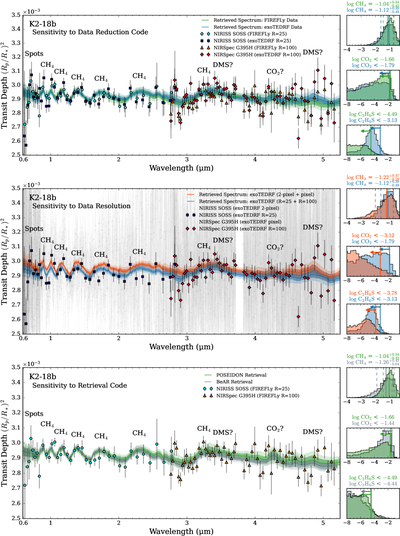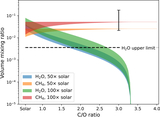Image Details

Caption: Figure 6.
Sensitivity of K2-18 b’s atmospheric composition to different data treatments and retrieval configurations. Top: comparison between POSEIDON retrievals of data reduced by the FIREFLy and exoTEDRF pipelines. Middle: comparison between POSEIDON retrievals of low-resolution (NIRISS SOSS, R ≈ 25; NIRSpec G395H, R ≈ 100) and high-resolution (pixel-level) exoTEDRF data. Bottom: comparison between the retrieval codes POSEIDON and BeAR on FIREFLy data. The retrieved model transmission spectra, plotted at R ≈ 100 for clarity, show the median (solid lines) and ± 1σ and ± 2σ credible regions (contours) corresponding to the data set(s) shown in each panel. The median retrieved offsets have been applied to the NIRSpec G395H NRS1 and NRS2 data sets. Right: the retrieved CH4, CO2, and DMS abundances corresponding to each retrieval. Our retrievals find broadly consistent CH4 abundances, indicating a robust detection (the median and ±1σ abundance constraints are represented by solid and dashed lines, respectively). However, any suggestions of CO2 and DMS depend on the specific data reduction and data resolution, indicating unreliable inferences (hence the 95% upper limits, represented by arrows).
Copyright and Terms & Conditions
© 2025. The Author(s). Published by the American Astronomical Society.












